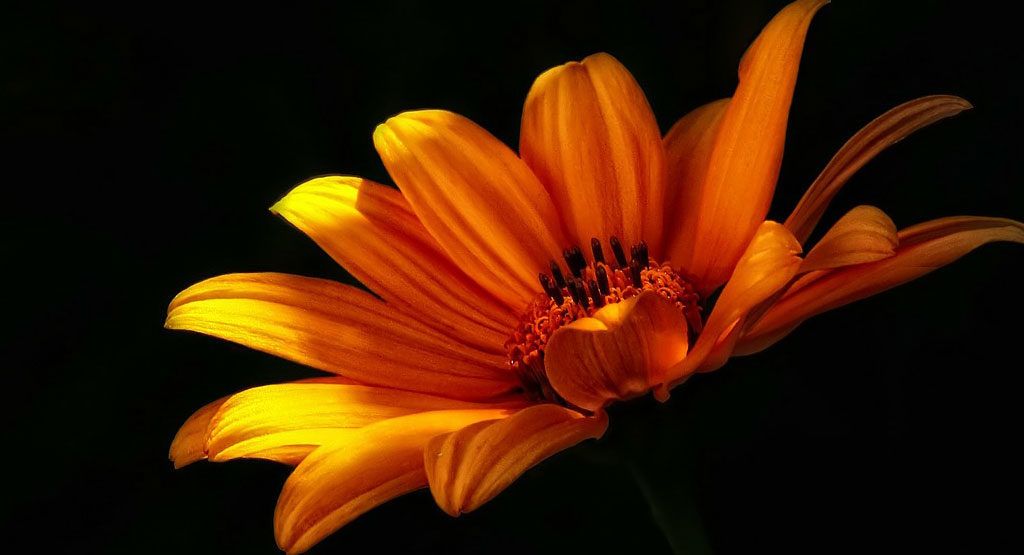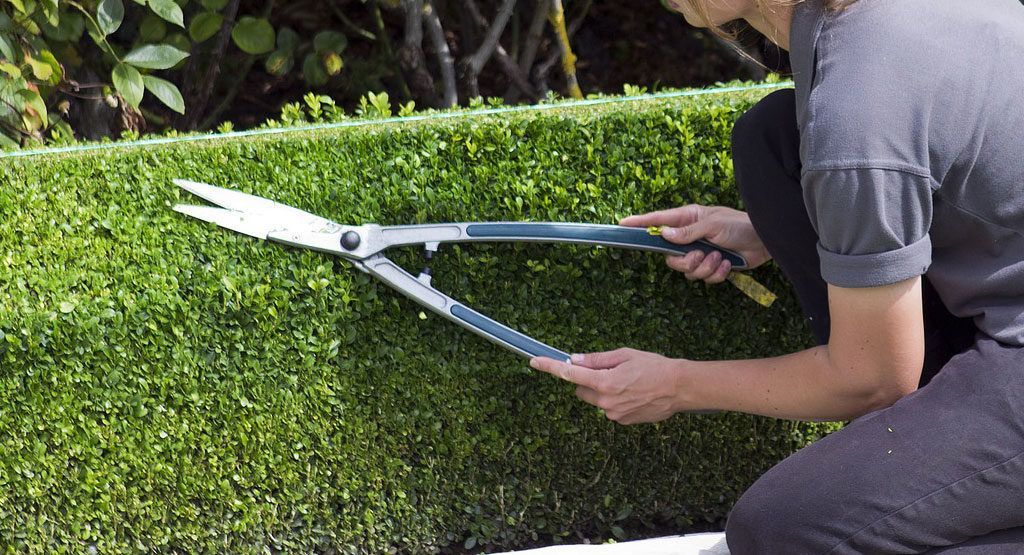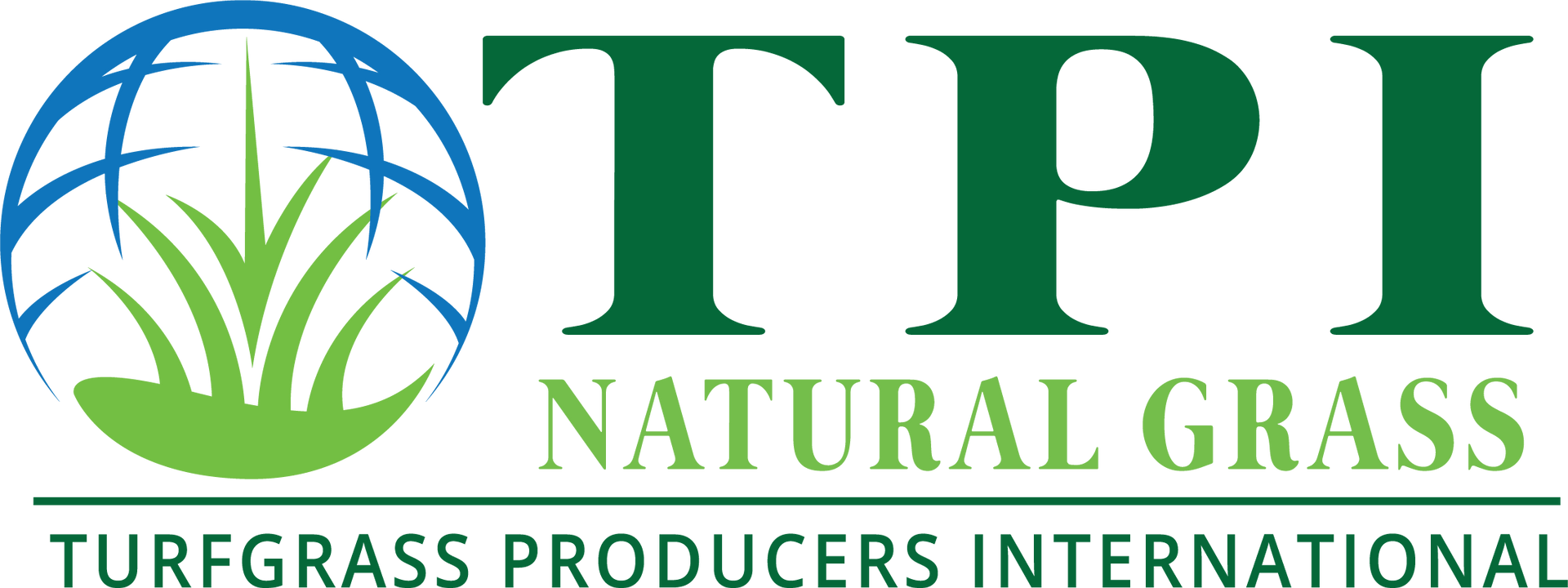Latest Blogs

Is a sod lawn less work? Yes, a professional sod lawn needs no special care because it is a healthy mature lawn when installed, whereas a sprigged or seeded lawn requires years of nurturing to reach maturity. Sod is grown under expert supervision from either top quality seed blends or certified hybrid sprigs. After it’s been installed, just water, mow and fertilize your sod lawn as needed and it will remain a healthy, green carpet of grass, requiring very little maintenance. Where can I use sod? Sod can be installed practically anywhere, even where seeding is impossible or too costly. Sod is often used to stop soil erosion and water pollution on slopes where rain would wash away both seed and soil. Sod is available in a variety of grass blends to suit various needs such as climate, amount of usage, sun and shade conditions. Can sod withstand heavy usage? Certainly! Sod establishes itself quickly. In a couple of weeks, it’s ready for full use. It creates the perfect surface for lawn games and family outdoor living. With today’s various blends of hardy grasses, sod is chosen for parks, golf courses, athletic fields, as well as residential homes and business parks. When can I install a sod lawn? Sod has revolutionized the lawn business! Now you can install a sod lawn anytime during the year when the ground can be tilled. There is no need to wait for the “right” season to put in your lawn. Is sod a good investment? Yes — it’s the only way to go — from bare soil to lush, green lawn in just hours. Yet, it’s relatively inexpensive to use. In the few hours it takes to install your sod lawn, your property value increases significantly and even more in aesthetic value. How will sod affect our environment? With today’s ecological concerns, many more people are considering sod for its environmental benefits. Sod cools and cleans the atmosphere by reflecting the sun’s heat and absorbing noises, carbon dioxide and other harmful pollutants. It releases valuable oxygen and moisture into the air we breath. As it grows, sod silently contributes to a healthier environment. Sod lawns meet the needs of today’s fast-paced, demanding lifestyle. How is sod related to our lifestyle? Today we expect convenience, efficiency and quality in our products. Buildings are going up almost overnight and attractive landscaping is installed in hours. Why wait 1 or 2 years for a new lawn to struggle to maturity when you can have a beautiful sod lawn complimenting your buildings right now. That high quality sod lawn can be conveniently installed in hours, at a surprisingly low cost.

There is no better time to enhance lawn’s ultimate beauty and success than by improving the soil before any planting takes place. Benefits of Proper and Complete Soil Preparation Improved Uniformity Increased Density Faster recovery from wear Reduced Use of water, fertilizer, & chemicals Reduced Maintenance Quick Fact: Why Is Good Soil Important? For optimum growth, turfgrass needs just four things (in the proper balance) to grow…sunlight, air, water and nutrients. Reduce any of these, or provide too much of any one, and the grass may die or simply suffer. In the right proportions, the grass will flourish, providing not only beauty to the landscape, but also a clean and safe place to play and many benefits to the environment. Grass obtains three of these four essential factors (air, water and nutrients) from the soil, but many soils are less than ideal for growing grass. Some soils contain too much clay and may be very compacted… great for roads, bad for grass, because air and water aren’t available to the roots and the roots can’t grow. Other soils may have too much sand… beautiful on a beach, but difficult to grow grass because water and nutrients won’t stay in the root zone long enough for the plant to use. Another frequently observed problem with many soils is that its pH (the degree of acidity or alkalinity) is too high or two low for optimum grass growth. Quick Fact:What Is The Best Soil For Turfgrass? Loams, sandy loams and loamy sands, with a pH of 6.0 to 7.0 are the very best soils for producing a beautiful, high-use, low-maintenance lawn. Unfortunately, this idea soil mixture is seldom found on any property after construction. Quick Fact: How Deep Should the Soil Be For Turfgrass? The absolute minimum quality soil depth for a care-free lawn is 10 cm (4 inches); however, for deeper root penetration and the benefits that brings, the accepted standard is 15 cm (6 inches). Quick Fact: Can Soils Be Improved? Practically without exception, not only can most soils be improved, they usually need to be improved to get the maximum results with only a minimum of other on-going effort. The knowledge of what’s necessary, the amount and availability of materials and the immediate costs of time and money are the factors that typically deter people from taking the steps necessary to improving the soil. While some people do not fully understand the importance of good soils for grass, many also believe they can save time and money by ignoring the need to improve their lawn’s soil. The fact is that failing to improve the soil before planting is only inviting a much greater and continual investment of both time and money, that will never return its value as fully as preparing the soil properly before planting any grass. Site Preparation Steps “The beauty is in the blades, but the ‘action’ is in the roots,” is a good adage to remember when growing grass. Thus, the value of proper site preparation and soil improvement, before any planting takes place, is that it will be easier for the grass roots to penetrate deeply and evenly. Deep roots will make the lawn more drought resistant, a more efficient water and nutrient user and more dense as new grass plant shoots emerge. A dense lawn crowds out weeds and better resists insects and disease. Follow these steps for a beautiful, healthy and trouble-free lawn: Clear the site of all building materials (wood, cement, bricks, etc.), as well as any buried stumps, rocks , stones or other debris that is larger than 4-5 cm (2-3 inches) in diameter. Rough grade the entire area to eliminate any drainage problems on the property. This would include sloping the grade away from building foundations, eliminating or reducing severe slopes and filling low-lying areas. A tractor-mounted blade and/or box are most often used for rough grading, but if the area is smaller, it can be done with hand tools. The rough grading will probably uncover more debris that should be removed and not buried. Initial tilling, to a depth of at least 5 cm (2 inches), should be completed prior to adding any topsoil or soil amendments. This will control most annual weeds, alleviate subsoil compaction and permit a bonding of the topsoil to the subsoil and improve root penetration and water movement. Add topsoil to achieve a total topsoil depth of 10-15 cm (4-6 inches), after firming. The topsoil should be a loamy sand, sandy loam, clay loam, loam, silt loam, sandy clay loam or other soil suitable for the area. To the extent possible, practical, affordable and available, incorporate humus (fully decomposed organic matter) into the topsoil. Test the soil pH with a chemical soil test to determine if any pH correction materials are required. Acidic soils (pH of 6 and below) can be improved with the addition of lime. The type (or source) and total amount of applied lime will be determined by the level of acidity and should be based on the recommendations of a reliable garden center or turf professional. Alkaline soils (pH of 7.5 and higher) can be improved with the addition of sulfur or gypsum. As with acidic soil correction materials, the type and total amount of materials will be determined by the level of alkalinity and should be based on professional recommendations. Apply “starter fertilizer” that is high in phosphate (P, or the middle number on a bag of fertilizer), at a rate recommended for the particular product. To prevent root injury to newly installed turfgrass sod, this fertilizer should be worked into the top 7 to 10 cm (3-4 inches). Finish grade the entire site, maintaining the rough grading contours and slopes, with a tractor-mounted box blade on large areas or heavy-duty rake on smaller sites. Roll the area with a lawn roller one third full of water to firm and settle the surface and reveal any low spots that should be filled to match the surrounding grade surface. If time permits, allow the area to settle further with rainfall or by applying irrigation water. This site is now ready for turfgrass sod. With this degree of careful and thoughtful soil preparation, the resultant lawn will be absolutely beautiful and require less maintenance, smaller quantities of applied water, fertilizer and pesticides, as it maintains a high degree of density and uniformity and recovers much more rapidly from wear. For years to come, your investment in soil preparations will yield a high return.

Water is essential to all life…too little water and we die, too much and we drown. The same is true of the grass in our lawns. Water makes up 70% to 80% of the weight of our lawn grasses and the clippings alone are nearly 90% water. While most people are concerned about not watering their lawns enough, the fact is that more lawns are damaged or destroyed by over-watering. Newly installed turfgrass sod has very important watering needs. Proper watering immediately after installation will ensure the turf gets established, and it will also have an impact on how well the lawn continues to flourish for years to come. WHEN To Water New Turfgrass Sod Begin watering new turfgrass sod within a half hour after it is laid on the soil. Apply at least 2 to 3 cm. (1 inch) of water so that the soil beneath the turf is very wet. Ideally, the soil 7 to 10 cm. (3 to 4 inches) below the surface should be moist. Watering Tip #1 : pull back a corner of the turf and push a screwdriver or other sharp tool into the soil. It should push in easily and have moisture along the first 7 to 10 cm. (3 or 4 inches), or you need to apply more water. Watering Tip #2 : make absolutely certain that water is getting to all areas of your new lawn, regardless of the type of sprinkling system you use. Corners and edges are easily missed by many sprinklers and are particularly vulnerable to drying out faster than the center portion of your lawn. Also, areas near buildings dry-out faster because of reflected heat and may require more water. Watering Tip #3 : runoff may occur on some soils and sloped areas before the soil is adequately moist. To conserve water and ensure adequate soak-in, turn off the water when runoff begins, wait 30-minutes to an hour and restart the watering on the same area, repeating this start and stop process, until proper soil moisture is achieved. For the next two weeks keep the below-turf soil surface moist with daily (or more frequent) watering. Especially hot, dry or windy periods will necessitate increased watering amounts and frequency. Watering Tip #4 : as the turf starts to knit its new roots into the soil, it will be difficult, impossible and/or harmful to pull back a corner to check beneath the turf (Watering Tip #1), but you can still use a sharp tool to check moisture depth by pushing it through the turf and into the soil. Watering Tip #5 : water as early in the morning as possible to take advantage of the daily start of the grass’s normal growing cycle, usually lower wind speeds and considerably less loss of water because of high temperature evaporation. Watering Tip #6 : if the temperature approaches 37( C (100( F), or high winds are constant for more than half of the day, reduce the temperature of the turf surface by lightly sprinkling (syringe) the area. This sprinkling does not replace the need for longer, deeper watering, which will become even more critical to continue during adverse weather conditions. During the rest of the growing season most lawns will grow very well with a maximum total of one inch of water a week, coming either from rain or applied water. This amount of water, properly applied, is all that is required for the health of the grass, providing it is applied evenly and saturates the underlying soil to a depth of 10 to 15 cm (4 to 6 inches). Watering Tip #7 : Infrequent and deep watering is preferred to frequent and shallow watering because the roots will only grow as deeply as its most frequently available water supply. Deeply rooted grass has a larger “soil-water bank” to draw moisture from and this will help the grass survive drought and hot weather that rapidly dries out the upper soil layer HOW To Water New Turfgrass Sod Proper watering techniques are a critical aspect of lawn watering, equal in importance to the issues of when to water and how much to water. Here are several key factors to proper technique: Avoid hand sprinkling because it cannot provide the necessary uniformity as most people do not have the patience, time or “eye” to adequately measure what is being applied across any larger areas of lawn. The only possible exception to this guideline would be the need to syringe the surface of the grass to cool it, or to provide additional water near buildings or other heat-reflecting surfaces. Understand the advantages of different sprinkler designs, because each type has its advantages and disadvantages and its proper use will be determined by the type of sprinkler you select. In-Ground Systems require professional design and installation and they require routine adjustments and regular maintenance to be most effective and efficient. The greatest mistake made with most in-ground systems is the “set it and forget it” philosophy that fails to account for the changing seasonal water requirements to maximize turf grown or even allowing the system to operate during or following a multi-inch rain storm. Another frequent problem is when heads get out of alignment and apply water to the sidewalk, street or house-siding, rather than to the lawn. Hose-End Sprinklers range in complexity, cost and durability, but are highly portable and can provide uniform and consistent coverage, when properly placed on the yard and adequately maintained. Sprinklers that do not throw the water high into the air are usually more efficient because prevailing winds are less disruptive of distribution patterns, the potential for evaporation loss is reduced and trees, shrubs and other plants do not block the pattern (or are very noticeable if they do). Several times during the growing/watering season, routine maintenance to check for blocked outlets, leaking or missing gaskets, or mis-aligned sprinkler heads is important, regardless of the sprinkler design. Select sprinklers and systems for uniformity of coverage across whatever area they are designed to water. Inexpensive hose-end sprinklers and in-ground irrigation systems can provide uniform coverage, but they can also be extremely variable and inconsistent in their coverage patterns. Verify watering uniformity can be accomplished with a very simple and inexpensive method that uses only 4 to 6 flat-bottomed, straight-sided cans (tuna fish, cat food, etc.), a ruler and a watch. Follow these steps: Step #1 : arrange the cans at random distances away from any sprinkler, but all within the area you assume is being covered; Step #2 : run the sprinkler for a specific amount of time, say a half-hour OR run the water until a specific amount of water is in at least one can, say a 1.5 cm (0.5 inches) Step #3 : measure the amount of water in each can, checking for uniformity. Some variation is expected, but a difference of 10-percent or more between any two cans must be addressed by replacing or adjusting the sprinkler or relocating the system. This measuring method should be used across an entire lawn that has an in-ground irrigation system to assure maximum coverage and uniformity. Watering difficult areas such as slopes and under trees requires some special attention to achieve maximum benefit and a beautiful lawn. For Slopes, see Watering Tip #3 For Areas Under and Near Trees you need to know the water requirements for the specific trees, as well as for the grass. Despite having deep “anchor” roots, trees take up moisture and nutrients from the top six inches of soil…the same area as the grass. Trees and turf will compete for water. Watering sufficiently for the grass may over-water some varieties of trees and under-water others. A common solution is to not plant grass under the drip-line of trees, but rather use that area for perennial ground-covers, flower beds or mulch beds. HOW MUCH Water Is Applied & Needed The amount of water your lawn requires and receives will determine its overall health, beauty and ability to withstand use and drought. Keep in mind that too much water can ruin a lawn just as fast as too little. One inch a week is the standard water requirement established for most lawns; however, this will vary between different turf species and even among cultivars within a specie. There will also be varying water requirements for seasonal changes and still more differences brought about because of different soil types. Look at your lawn to determine its water needs. Grass in need of water will have a grey-blue cast to it, rather than a blue-green or green color. Also, foot prints will still appear after a half-hour or more on a lawn in need of water, while on a well watered lawn foot-prints will completely disappear within minutes. Use a soil probe, such as a screwdriver or large spike to determine how dry your lawn is. If the probe can be pushed into the soil easily, it’s probably still moist, but if it takes a lot of pressure to push in, it’s time to water. Verify watering quantities with the same measuring can method described above, except you will want to note the time it takes for the cans to collect a specific amount of water. For example, if 0.5 cm (0.25-inches) collects in 30 minutes, you can easily calculate that it will take one hour to apply 1 cm (0.5-inches) of water or two hours to apply 2.5 cm (1-inch). Water timers can help provide consistency and even be programmed or set to turn-off when no one is awake or at home. Some timers measure just the amount of time water is flowing through the devise and you have to know or calculate how long to set the timer for (see item above). Other units measure the number of gallons of water flowing through it. Knowing that 600 gallons per 1,000 square feet equals one-inch of water will help you calculate the timer settings your lawn will require.





